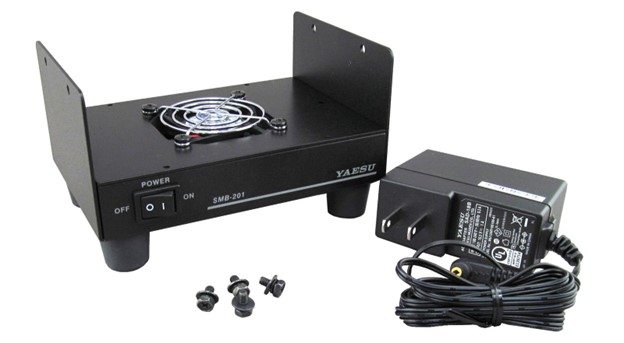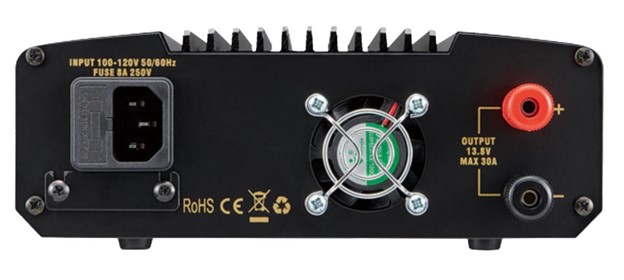Every ham operator knows that heat is the silent enemy lurking behind every transmission. Whether you’re rag-chewing on 80 meters, running digital modes on FT8, or calling CQ in a weekend contest, your equipment is working hard—and when it gets hot, bad things can happen. Overheating causes erratic performance, shortens component life, and in extreme cases, lets the smoke out. As hams well understand, once the magic smoke escapes, there’s no putting it back.
Let’s explore why heat is such a big issue in amateur radio. How do you recognize the warning signs? What can you do to keep your shack as cool as a cucumber, even during a DX pileup?
You’ve got questions—we’ve got some answers.
Why Ham Gear Heats Up
At the heart of every transmitter is the simple truth: Turning electrical power into radio waves isn’t 100% efficient. Some of that power turns into heat instead. Transceivers generate heat in their final amplifier stages, particularly when operating at full power for extended periods.
Linear amplifiers are even bigger heat factories. Pushing 1,200 watts of RF out the antenna might sound impressive, but a significant amount of that power becomes unwanted heat inside the amp’s chassis. Power supplies, tuners, and other gear also contribute to the overall temperature rise in your shack.
Even a few degrees of extra heat can push sensitive components like transistors, capacitors, and regulators closer to their thermal limits. Over time, this thermal stress can lead to premature failure or performance issues.
Recognizing Overheating Symptoms
Ham gear rarely bursts into flames, but it does give warning signs when things get too hot:
- Fans ramp up and stay on long after transmissions stop
- The rig suddenly reduces power output or shuts down—that’s thermal protection kicking in
- Audio may distort, or signal quality drops
- Plates in tube amplifiers may glow cherry red instead of dull orange
Ignoring these symptoms is like ignoring your car’s temperature gauge. Heat damage is cumulative. Even if the rig recovers, the components are slowly cooking. When this happens, your rig needs help.
Ventilation: Your First Defense
A surprising number of heat issues are caused not by design flaws, but by poor placement. Give your gear breathing space. Don’t cram your transceiver into a cubbyhole or stack other equipment on top of it. Leave at least three to four inches of clearance around vents and fan openings. If your rig sits in a desk or rack, consider adding ventilation holes to these or installing a small fan to help extract the heat.
Don’t block the airflow. The rear or bottom of your radio often handles air intake and exhaust. Blocking these vents traps hot air, turning your radio into a self-basting turkey. Hot air rises, so placing the hottest gear, like amplifiers and power supplies, higher on open shelving allows natural convection to help.
That heavy wire stand underneath the radio’s case isn’t just tilting the screen for better viewing. It also provides more space under the radio for airflow.
Dust, the Silent Insulator
Dust is more than just unsightly—it’s one of the worst enemies of cooling systems. Over time, it sneaks into vents, coats fans, and turns perfectly good heat sinks into fuzzy little blankets.
A layer of dust may look harmless, but it’s basically insulation—and not the good kind. Every few months, grab some compressed air and blast those vents clean. If you have pets, you may need to do it more often. Pet hair has an uncanny ability to find its way into cooling vents.
Also, do regular dusting and vacuuming—even that corner behind the operating desk you haven’t seen since 1999. Clean fan filters if your amplifier or power supply has them.
Power Trip
Every ham loves power. The thrill of keying up 1.5 kilowatts and hearing your signal go halfway around the world is irresistible. But more power means more heat—and more chances for your amplifier to enter meltdown mode.
Back off the power just a bit. Dropping from 100 watts to 80 might make only a fraction of a decibel difference on the other end, but your finals will breathe a sigh of relief. For digital modes like FT8 or RTTY, where your transmitter runs continuously, use shorter transmission cycles or lower duty cycles. These modes can cook finals faster than a microwave burrito. Use CW or SSB for extended operation. They naturally include pauses that let the rig cool between bursts.
Think of it as running a marathon instead of a sprint—pacing yourself prevents burnout, for both you and your equipment. Remember, a cool 80-watt signal that makes the trip beats a fried 100-watt rig every time.
Upgrade or Supplement Cooling
If your radio tends to run hot or if you operate in a warm environment, consider upgrading your cooling setup. Small, quiet fans can be positioned to blow air across your rig or amplifier. Some hams use USB or 12V computer fans mounted with simple brackets or stands. Laptop-style cooling pads can also help with smaller rigs or power supplies.
Many modern amps have temperature-controlled fans, but older models may not. Adding a thermostatically controlled fan circuit can improve longevity and reduce noise. Just make sure you get the airflow direction right. One fan blowing in and one blowing out creates a nice breeze instead of a heat tornado.



Shack Environment
Even the best cooling system can’t overcome a hot, stuffy shack. Ambient temperature has a significant impact on both equipment performance and operator comfort.
Avoid direct sunlight on your radio desk—it can raise surface temperatures by 10°F or more. Use air conditioning or fans to keep the room comfortable. A shack that’s pleasant for you is ideal for your electronics, too.
Check humidity levels. High humidity doesn’t directly cause heat issues, but it can worsen corrosion on hot components, thereby reducing heat dissipation over time. If your shack is located in a basement or attic, consider installing a small exhaust fan or dehumidifier to stabilize the environment.
Special Care for Tube Gear
For vintage radio operators, tube amplifiers and transmitters are wonderful, but they’re also mini space heaters that can keep you warm on a cold night. Tubes naturally run hot, but there’s a difference between “pleasantly warm” and “molten core of the Earth.” A tube plate should glow a faint red, not orange enough to read by.
Ensure plenty of open space above the unit. Don’t place anything directly on top. Make sure the blower or fan (if present) is functioning properly. Don’t leave tube rigs idling unnecessarily. Even in standby, the filaments generate significant heat.
Monitor Temperatures
Many modern rigs, especially amplifiers, display internal temperature readings or fan status. For older gear, inexpensive digital temperature probes can be used to monitor case or heat sink temperatures. Keeping tabs on how hot your equipment gets helps you spot problems early.
You can even use small adhesive thermometers on power supplies or amplifier chassis—they’re cheap, reliable, and surprisingly accurate.
Give It a Break
We’ve saved the simplest advice for last—let your equipment rest. Between long QSOs, contests, or digital sessions, take a few minutes to let the fans cool things off. It’s not only good for your rig—it also gives you a chance to grab coffee, stretch, or brag to your XYL about your latest contact on 20 meters.
Hot Stuff
Heat is an unavoidable byproduct of transmitting RF power, but it doesn’t have to be your rig’s downfall. With smart operating habits, proper ventilation, and occasional maintenance, your transceiver and amplifier will stay cool and reliable.
Treat your equipment right: keep it clean, give it space, and don’t push it to the limits. Add a fan or two if needed, and remember that radios, like hams, perform best when they’re relaxed and not sweating.

